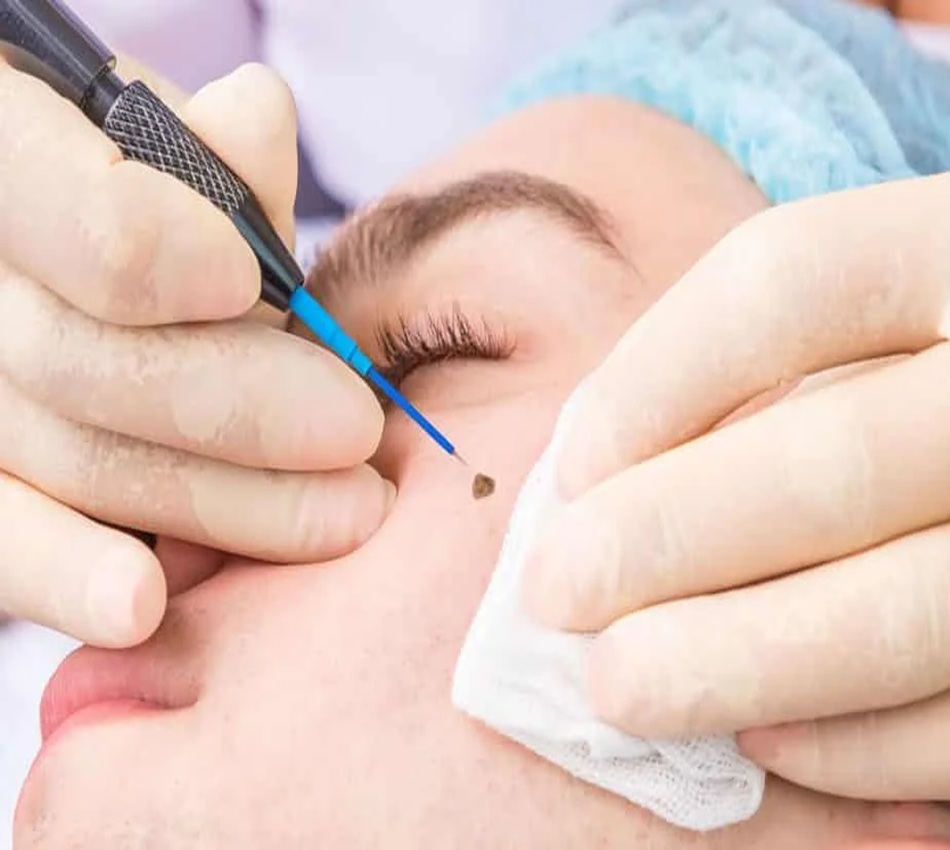
Altrincham Mole Removal Clinic – Safe, Scar-Minimising Treatment
Mole Removal
Mole Removal at Altrincham
At Bollin Clinic in Altrincham, our expert Mole Removal services offer safe and effective solutions for removing unwanted moles, skin tags, or other benign skin lesions. Whether for cosmetic reasons or due to irritation, our skilled clinicians use advanced techniques such as surgical excision or laser treatment to ensure minimal scarring and optimal results. Each mole is thoroughly assessed to determine the best approach, ensuring both aesthetic and health considerations are taken into account. Our goal is to provide you with smooth, clear skin and peace of mind — all in a professional, discreet setting. Our personalised approach means your treatment will be tailored to your skin type, concerns, and desired outcome. Choose Bollin Clinic for expert Mole Removal that prioritises your comfort, safety, and confidence.
At Bollin Clinic in Altrincham, our expert Mole Removal services offer safe and effective solutions for removing unwanted moles, skin tags, or other benign skin lesions. Whether for cosmetic reasons or due to irritation, our skilled clinicians use advanced techniques such as surgical excision or laser treatment to ensure minimal scarring and optimal results.
Expert Surgeons & Advanced Facilities at Bollin Clinic, Altrincham
At Bollin Clinic, Altrincham, your care is in the hands of highly experienced surgeons who specialise in body contouring, post-pregnancy surgery, and advanced cosmetic procedures. Our medical team is dedicated to delivering safe, natural-looking results with precision and compassion.
We are proud to offer a state-of-the-art clinic equipped with modern surgical facilities, advanced technology, and a comfortable, discreet environment. From your first consultation through recovery, you’ll experience the highest standards of patient care and support.
- Highly qualified, board-certified surgeons
- Personalised treatment plans designed for your goals
- Safe, private, and fully regulated facilities
- Friendly, supportive team to guide you every step
Your transformation deserves expert care in a trusted setting. 👉 Book your consultation today at Bollin Clinic, Altrincham, and take the first step towards restoring your confidence and body shape.
Book NowWho is an Ideal Candidate for Mole Removal
You may be suitable for Mole Removal if you:- Have a mole that is bothersome, irritating, or unsightly.
- Want to remove a mole for cosmetic reasons or peace of mind.
- Are in good general health and do not have active skin infections.
- Have been advised by a clinician that the mole is non-cancerous.
👉 Book your consultation today at Bollin Clinic, Altrincham, and take the first step towards smoother, clearer skin.
Book NowWhy Choose Bollin Clinic?
At Bollin Clinic, we offer expert Mole Removal services designed to provide safe, effective, and discreet treatment in a caring environment. Whether for cosmetic reasons or skin comfort, our team ensures every patient receives individualised care.
- Experienced Clinicians – Our team has vast experience in mole, skin tag, and lesion removal using the latest medical techniques.
- Personalised Consultations – Each mole is carefully assessed to determine the safest and most appropriate removal method for you.
- Modern, Safe Facility – We perform minor surgical procedures in a sterile, private setting using advanced equipment.
- Minimal Downtime – Most procedures are quick, with minimal discomfort and a fast recovery.
- Natural Results – Our approach aims to remove the mole while maintaining smooth, healthy-looking skin and minimal scarring.
👉 Book your consultation now at Bollin Clinic, Altrincham, and take the first step toward safe and expert mole removal.
Book NowThe Procedure
Consultation
A specialist will examine the mole(s), assess any symptoms or concerns, and determine the most appropriate removal method — surgical excision, laser, or shave removal.
Local Anesthesia
The area around the mole is numbed using a local anesthetic to ensure a painless experience during the procedure.
Mole Removal
The mole is carefully removed using the recommended method — excision with stitches, laser treatment, or shave removal — based on location, size, and type.
Aftercare & Dressing
A sterile dressing is applied, and aftercare instructions are provided. In some cases, follow-up may be required to check healing or remove stitches.
Recovery
Recovery is typically quick. Most patients resume normal activities within 24–48 hours. Minor redness or scabbing may occur but usually heals in 1–2 weeks.
Ready to Take the Next Step?
Book AppointmentMole Removal: Before and After Photos
The images below illustrate real results from Mole Removal procedures performed at Bollin Clinic. Whether removed for cosmetic reasons or medical concerns, our tailored approach ensures minimal scarring and optimal healing. Individual results may vary depending on mole size, depth, and location. Book a consultation with our specialists in Altrincham to see what’s possible for you.
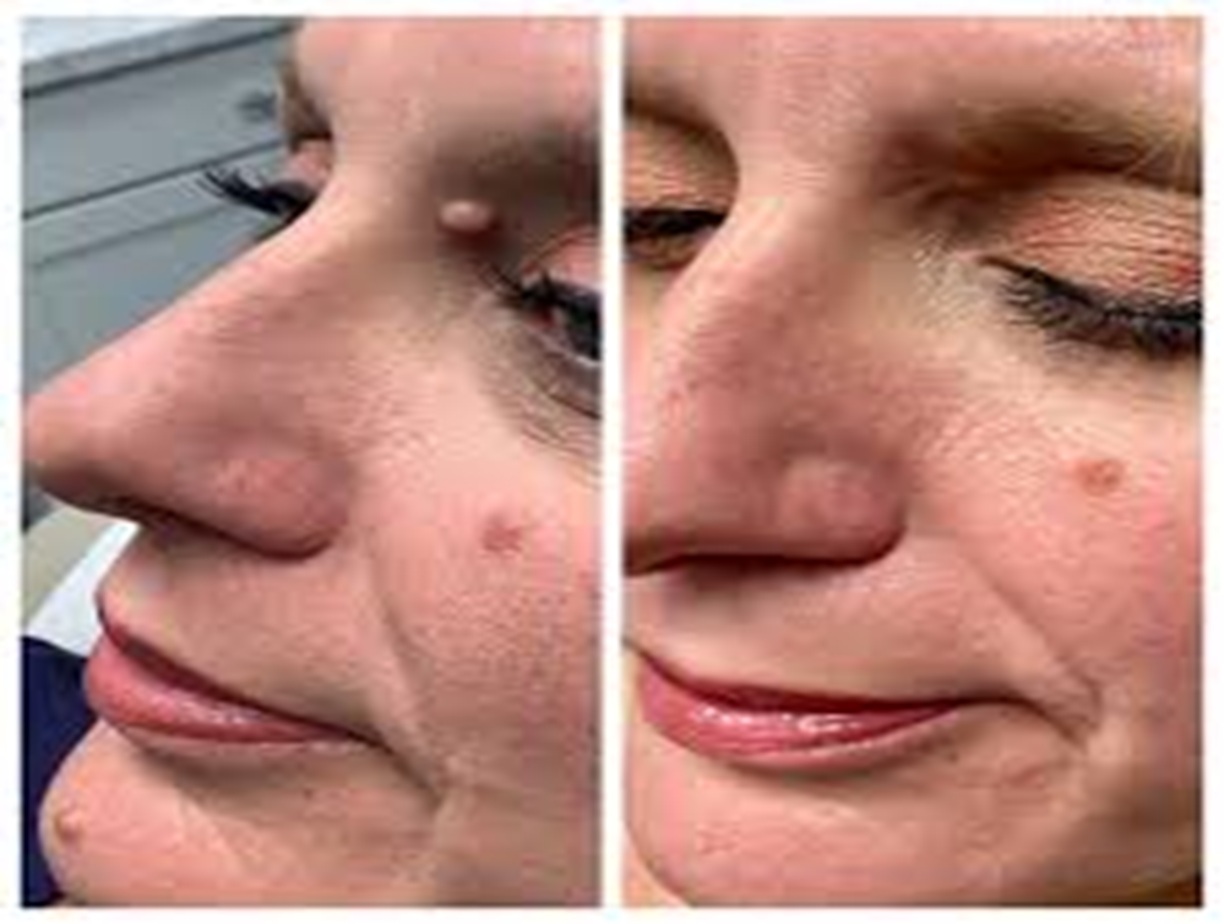
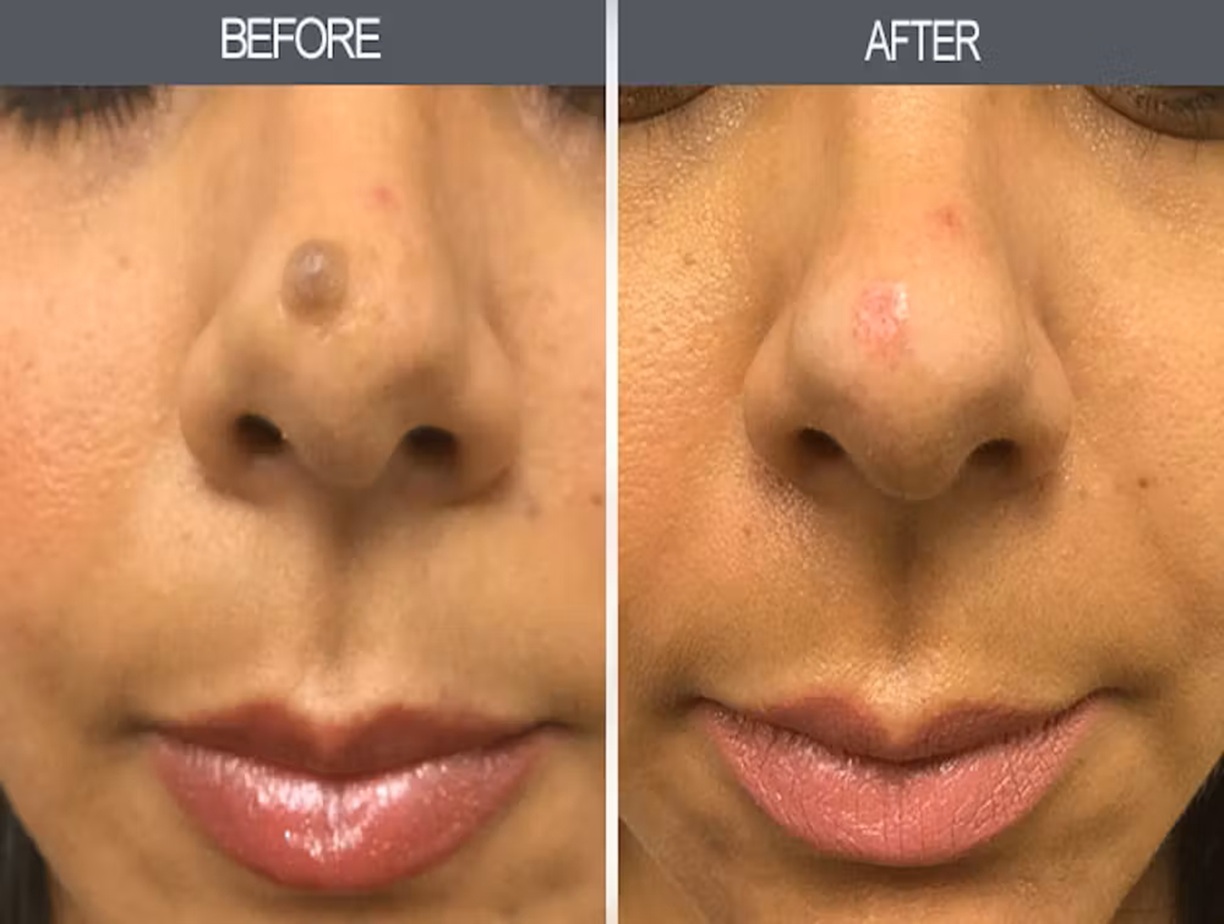
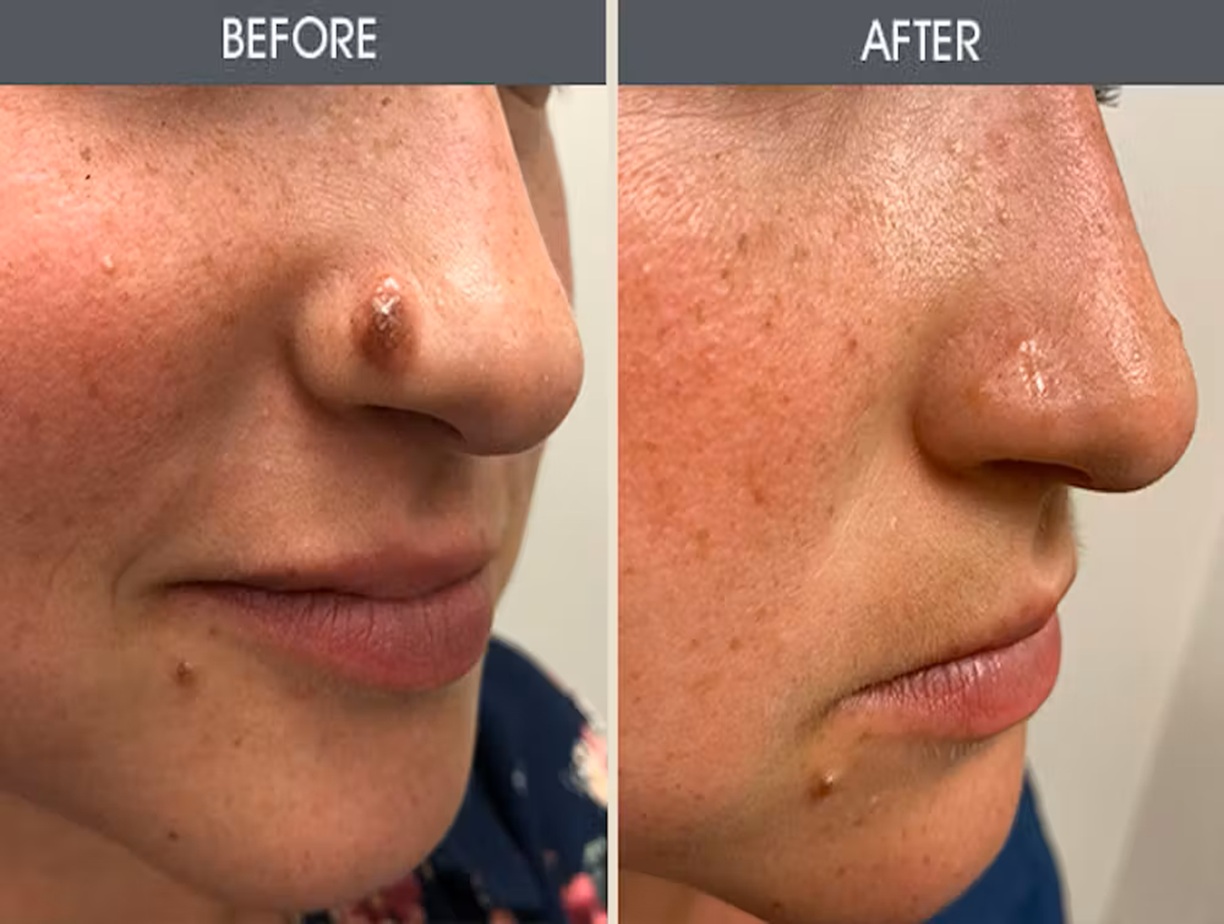
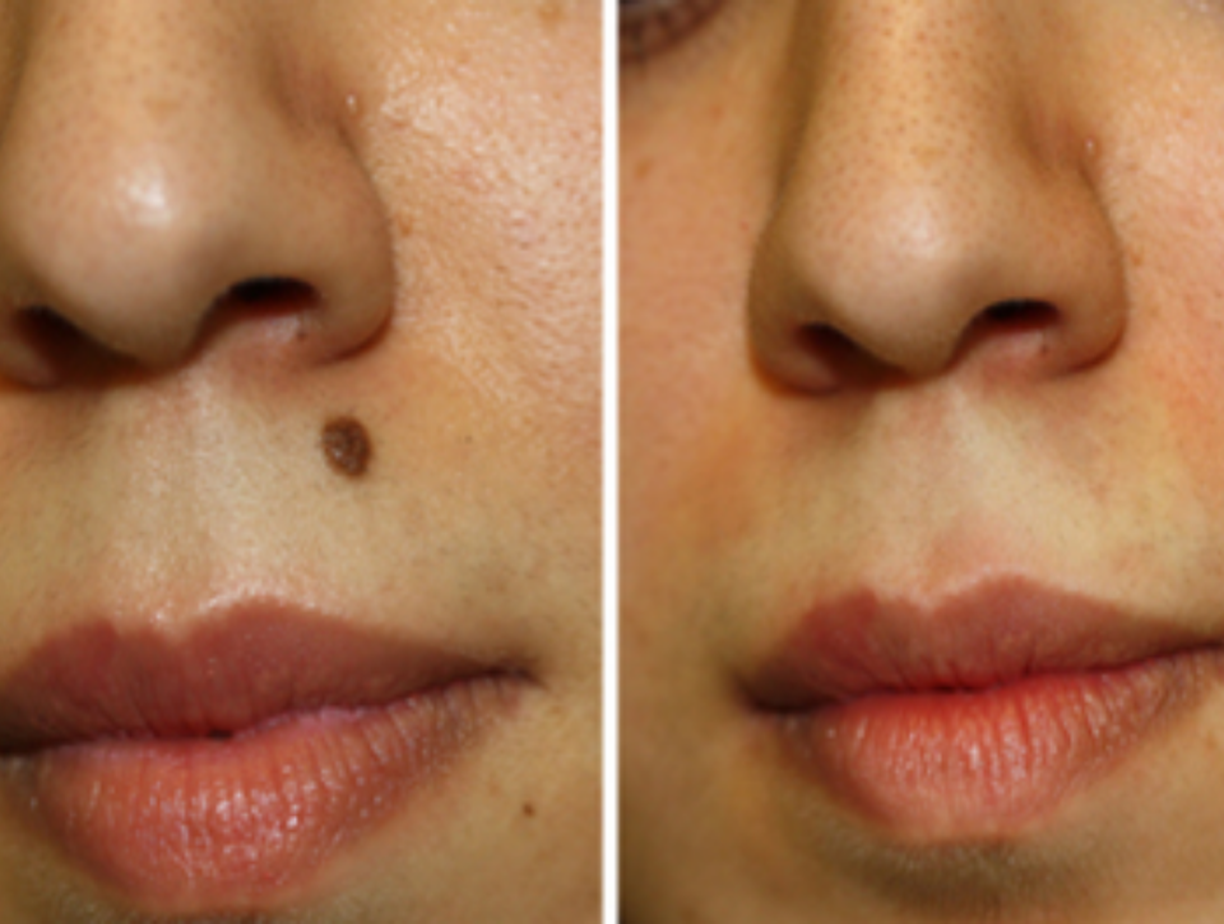
What are the Benefits of Mole Removal?
Mole removal offers both medical and cosmetic benefits, helping you feel more confident in your skin:
- Improved skin appearance – Removing raised or pigmented moles can give your skin a clearer, smoother look, especially on visible areas like the face, neck, or arms.
- Boost in self-confidence – Many patients feel more confident after removing moles that made them feel self-conscious or affected how they dressed or styled themselves.
- Minimally invasive – Mole removal is a quick, low-risk procedure typically performed under local anaesthetic with minimal downtime and little to no scarring.
- Medical reassurance – Suspicious or changing moles can be assessed and removed for histological testing, offering peace of mind and early detection of potential skin issues.
At Bollin Clinic in Altrincham, our expert-led mole removal services are tailored to your individual needs—whether cosmetic or medical—ensuring safe, natural-looking results.
👉 Book your consultation today at Bollin Clinic, Altrincham, and take the first step toward clearer, healthier skin.
Book Now
Mole Removal
Frequently Asked Questions
Are all moles cancerous?
No. Most moles are benign. However, any mole that changes, bleeds, itches, or looks different from others should be checked by a dermatologist.
Does mole removal hurt?
A local anesthetic is used to numb the area before removal, so you shouldn't feel pain during the procedure. You may experience mild soreness afterward.
Will I have a scar after mole removal?
Some scarring is possible, especially with excision. The degree of scarring depends on the mole’s size, location, and the removal method. Dermatologists use techniques to minimize scarring as much as possible.
Can I remove a mole at home?
No, At-home mole removal is unsafe and may lead to infection, scarring, or missed diagnosis of a skin cancer. Always have moles evaluated and removed by a medical professional.
Will the mole come back after removal?
If the mole is completely removed, it’s unlikely to return. However, in some cases (especially with shave removal), regrowth is possible and may need follow-up.
How do I know if a mole is suspicious?
Watch for the ABCDEs of melanoma:
- Asymmetry
- Border irregularity
- Color variation
- Diameter larger than 6mm
- Evolving or changing
- Any mole showing these signs should be evaluated by a dermatologist.

